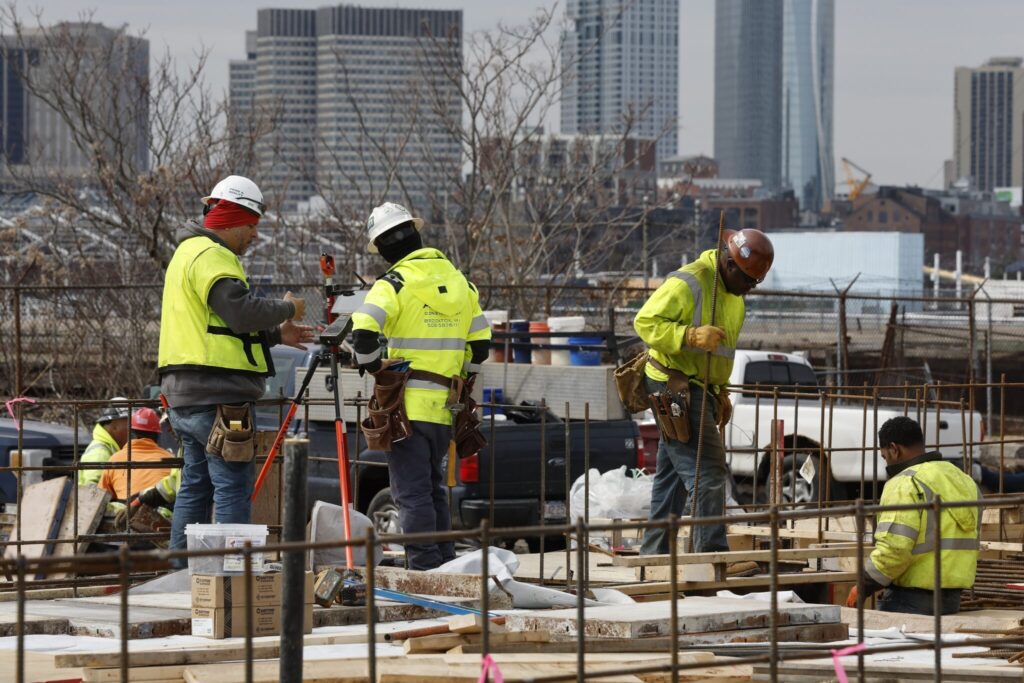U.S. job openings/ labor market/ Federal Reserve/ job growth/ inflation/ employment report/ Newslooks/ WASHINGTON/ J. Mansour/ Morning Edition/ In August, U.S. job openings rose to 8 million, defying expectations and indicating a resilient labor market. The Labor Department’s report showed growth in construction and government job openings, while layoffs decreased. Despite cooling momentum in hiring, the labor market remains strong as inflation drops and interest rates decline.

U.S. Job Market Strengthens: Quick Looks
- Job Openings: 8 million vacancies in August, up from 7.7 million in July.
- Layoffs: Fewer layoffs reported; worker quit rate lowest since August 2020.
- Economy: Resilience seen despite Federal Reserve’s rate hikes to curb inflation.
- September Forecast: Economists predict 143,000 jobs added with unemployment holding at 4.2%.
U.S. Job Market Shows Resilience with 8 Million Openings
Deep Look
The U.S. labor market displayed unexpected strength in August, with job openings rising to 8 million, up from 7.7 million the previous month, according to a report by the Labor Department on Tuesday. This surge defied predictions from economists, who had anticipated the number of vacancies to remain steady. The rise in job openings was particularly evident in sectors such as construction and state and local government, signaling steady demand for workers even as other areas of the economy show signs of cooling.
In addition to the increase in job openings, layoffs also fell during the month, reflecting a general stability in the workforce. However, the number of Americans quitting their jobs dropped to its lowest point since August 2020, a time when the economy was still grappling with the aftermath of COVID-19 lockdowns. Typically, a high quit rate indicates confidence in job prospects, so this decline suggests that workers may be feeling more cautious about changing jobs in the current environment.
Job Openings Post-Pandemic
Job openings have been on a downward trend since peaking at 12.2 million in March 2022. However, even at 8 million, they remain above pre-pandemic levels, highlighting the continued strength of the U.S. labor market. The post-COVID recovery saw employers scrambling to hire as the economy rebounded faster than expected, leading to increased demand for workers across various sectors. This surge in demand contributed to rising inflation, which reached 9.1% at its peak in June 2022.
Federal Reserve’s Impact
To combat inflation, the Federal Reserve implemented a series of interest rate hikes, increasing its benchmark rate 11 times between 2022 and 2023. These measures were aimed at slowing the economy and bringing inflation under control. Fortunately, inflation has since eased, dropping to 2.5% in August, but the rapid rate hikes initially sparked fears of a potential recession.
Despite these concerns, the U.S. economy has proven remarkably resilient. While job growth has slowed, with an average of 116,000 new jobs per month from June to August — the weakest three-month average since mid-2020 — the labor market continues to display underlying strength. Economists credit the gradual cooling of inflation and the Fed’s cautious adjustments in interest rates for helping the economy avoid a recession.
Upcoming Jobs Report
Looking ahead, economists are anticipating the release of the Labor Department’s September jobs report, which is expected to show that U.S. employers added 143,000 jobs last month. Forecasts also predict that the unemployment rate will hold steady at a low 4.2%. These figures reflect a labor market that is cooling slightly but still performing well, considering the broader economic challenges.
In response to the slowing pace of job growth and falling inflation, the Federal Reserve took significant action last month, cutting its benchmark rate by half a percentage point. This marked the first and largest rate cut by the Fed since March 2020. The rate cut is intended to provide further support to the economy while ensuring that inflation remains in check.
Economist’s Insight
Robert Frick, an economist with Navy Federal Credit Union, noted the significance of the unexpected rise in job openings. “Job openings had a big gain, and while these numbers are volatile, it’s likely employers see falling interest rates spurring the economy and may want to staff up,” Frick said, emphasizing that businesses may be preparing for a potential economic boost from lower interest rates.
Overall, the U.S. labor market continues to exhibit strength, with job openings remaining robust and layoffs at a low. However, the decline in the quit rate suggests that workers may be less confident in the current job market, indicating a more cautious outlook as the economy navigates the post-pandemic recovery and the Federal Reserve’s ongoing monetary adjustments.







